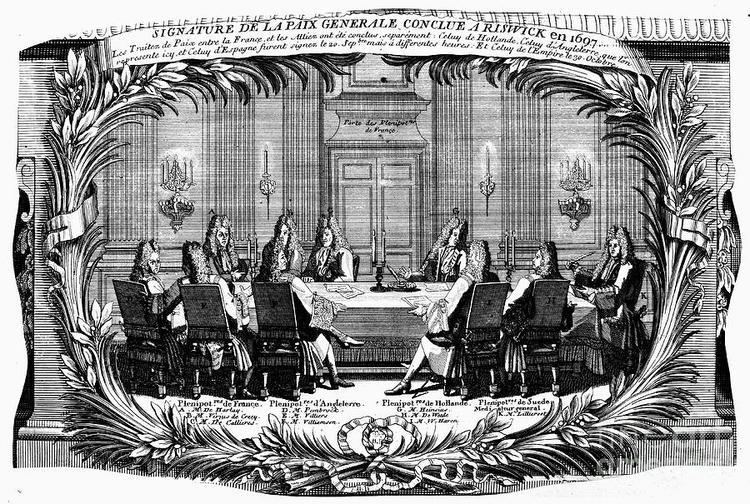 | ||
The Treaty of Ryswick, or Ryswyck, was signed on 20 September 1697 and named after Ryswick (now Rijswijk) in the Dutch Republic. The treaty settled the War of the League of Augsburg (Nine Years' War), which pitted France against the Grand Alliance of England, Spain, the Holy Roman Empire and the United Provinces. Under the terms of the treaty, France renounced some recent territorial gains, but did gain recognition for its control over Acadia and Saint-Domingue (to-be Haiti).
Contents
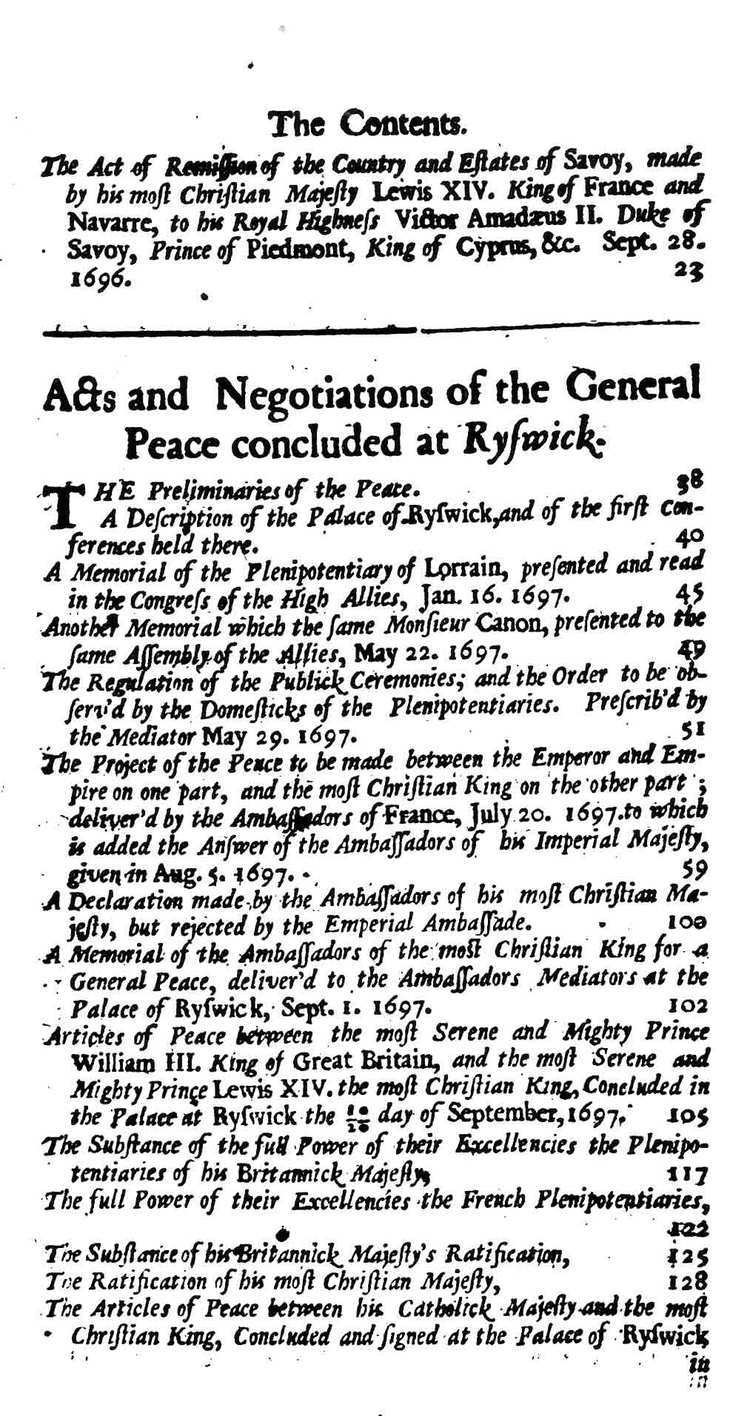
Negotiations
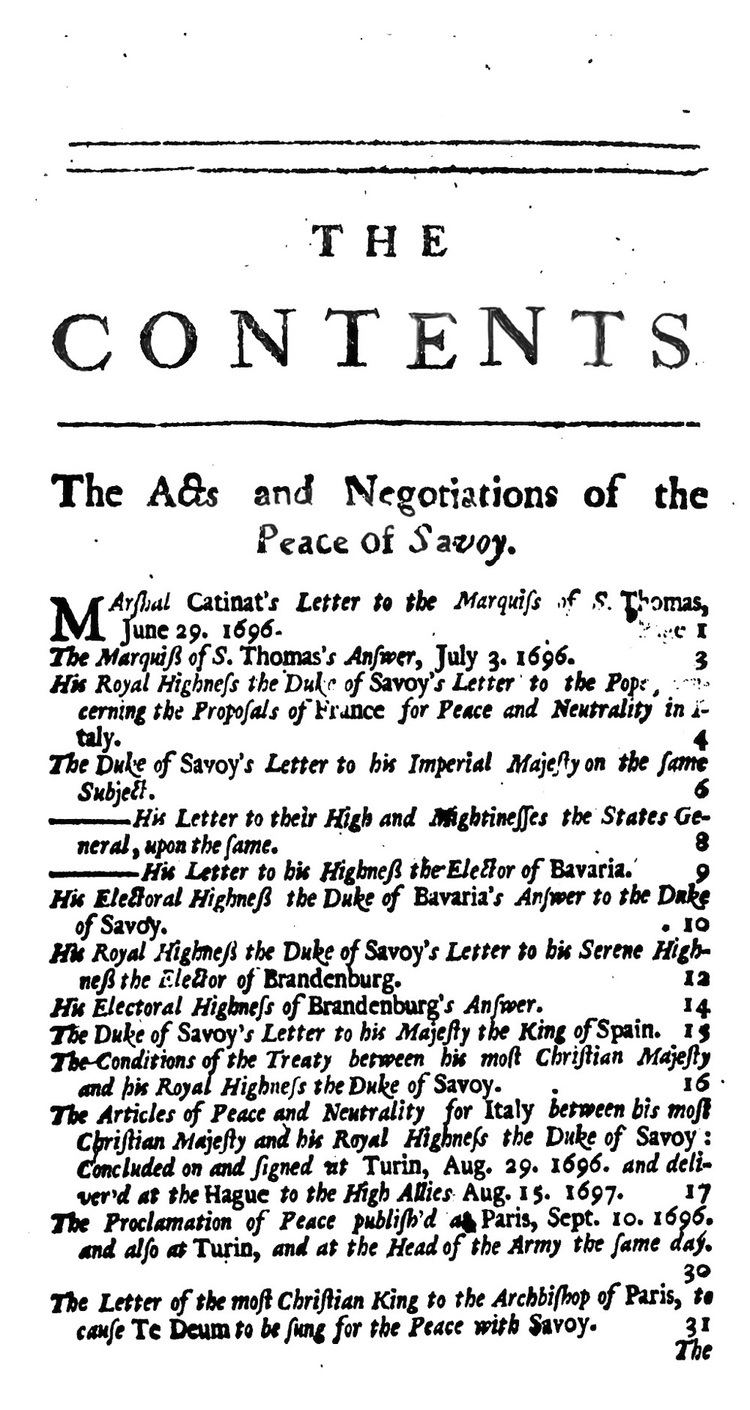
Negotiations started in May. The French representatives had their headquarters at The Hague, and the allies were based in Delft: the conference taking place in between the two towns in the Huis ter Nieuwburg, Ryswick.
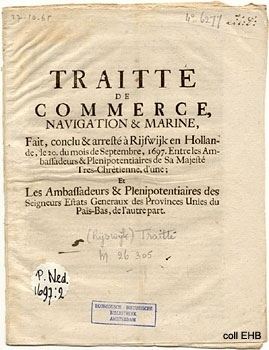
For the first few weeks, no result was reached so in June the two protagonists in the struggle, William III of Orange and Louis XIV of France, each appointed one representative to meet together privately. The two chosen were William Bentinck, Earl of Portland, and Marshal Boufflers, and they soon drew up the terms of an agreement to which, however, neither the Holy Roman Emperor, Leopold I, nor Charles II of Spain would assent. Soon, Spain gave way, and on 20 September a treaty of peace was signed between France and the three powers, England, Spain and the United Provinces. William then persuaded Leopold to make peace, and a treaty between France and the Holy Roman Empire was signed on the following 30 October.
Europe
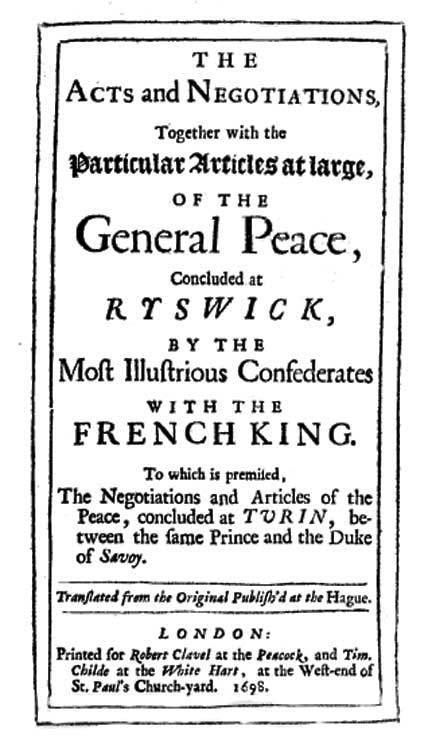
The basis of the peace was that all towns and districts seized since the Treaty of Nijmegen (1679) should be restored. France surrendered Freiburg, Breisach, and Philippsburg to the Holy Roman Empire, although it kept Strasbourg. On the other hand, France regained Pondichéry (after paying the Netherlands a sum of 16,000 pagodas), as well as Acadia, and Spain recovered Catalonia and the barrier fortresses of Mons, Luxembourg, and Kortrijk.

The Duchy of Lorraine, which for many years had been in the possession of France, was restored to Leopold Joseph, a son of Charles IV, Duke of Lorraine, and the Dutch were to be allowed to garrison some of the chief fortresses in the Spanish Netherlands, including Namur and Ypres. Louis undertook to recognize William III as king of England and promised to give no further assistance to James II of England; he abandoned his interference in the Electorate of Cologne and also the claim that he had put forward to some of the lands of the Electoral Palatinate.
North America
The War of the Grand Alliance also played out in North America, where it was called King William's War. The French colonies of Acadia and Canada, along with their Native allies (notably Abenaki, Pennacook, and Huron), fought the northern English colonies and their Native allies (notably Iroquois and Mohawk). In this theatre the French had been on the ascendant; "all the English assaults on French possessions had been repulsed; Fort Penobscot on the border of Acadia had been destroyed; the frontiers of both New England and New York had been ravaged and forced back; the English outposts in Newfoundland had been destroyed and the island virtually conquered."
In addition, throughout the war England's claims to the Hudson Bay had been severely contested in a series of French expeditions culminating in Pierre Le Moyne d'Iberville's capture of York Factory shortly before the signing of the treaty. Still, the Treaty of Ryswick returned the territorial borders to where they had been before the war (status quo ante bellum). The Iroquois nation, deserted by the English allies, continued to make war on the French colonies until the Great Peace of Montreal of 1701.
Spain formally recognized French control of some Caribbean territory: Tortuga Island and the western third of the adjacent island of Hispaniola, where the French colony of Saint-Domingue had been established.
